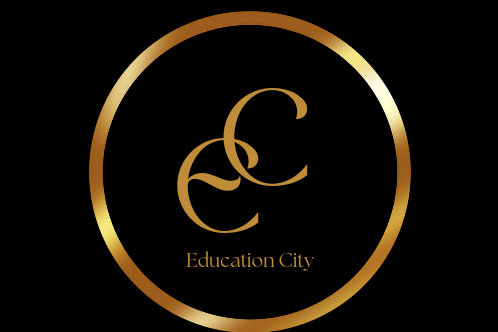Introduction
Pakistan’s education system has seen significant transformation over the years, yet it continues to face numerous challenges. This blog aims to provide an overview of the education system in Pakistan, highlighting its strengths, weaknesses, and the ongoing efforts to improve it.
Historical Background
Pakistan inherited its education system from British colonial rule. The system primarily consisted of English-medium schools, with a focus on memorization and examination-based assessment. While this system produced a literate workforce, it lacked inclusivity and accessibility.
The historical background of Pakistan’s education system is rooted in its colonial past. During British rule, which lasted until 1947, the education system in the region that would become Pakistan was primarily designed to serve the needs of the colonial administration. English-medium schools were established, focusing on a curriculum that emphasized rote learning and examination-based assessment.
The British colonial rulers aimed to produce a class of educated individuals who could assist in the administration of their vast empire. After gaining independence in 1947, Pakistan inherited this education system, and it became the foundation upon which the nation’s educational institutions were built. Over the years, Pakistan has attempted to adapt and reform this inherited system to better meet the needs of its diverse population and the demands of a rapidly changing world.Artificial intelligence

Key Components of Pakistan’s Education System
Structure: The education system in Pakistan is divided into several stages, including primary, middle, high school, and higher education. It also comprises public and private educational institutions.
Languages of Instruction: Urdu and English are the primary languages of instruction, with regional languages being used at the primary level.
Curriculum: The national curriculum is set by federal and provincial education boards. In recent years, efforts have been made to standardize the curriculum and introduce a more modern and inclusive approach.

Challenges
Access to Quality Education: Despite improvements in enrollment rates, many children, particularly in rural areas, still lack access to quality education. Gender disparity is another issue, with girls often facing barriers to education.
Teacher Quality: The quality of teaching staff varies significantly, and many teachers lack proper training and incentives, affecting the quality of education.Inequality: Socioeconomic disparities persist, leading to unequal access to educational resources. Private schools often provide better quality education, but they are often unaffordable for many.
Curriculum and Pedagogy: The traditional rote-learning approach has been criticized for stifling creativity and critical thinking. There is a growing need to update pedagogical methods and align the curriculum with the needs of the 21st century.
Reforms and Progress

Education Policy 2021: Pakistan introduced a new education policy in 2021, emphasizing the need for equitable access, curriculum reform, teacher training, and digital literacy.
Investment in Education: There has been a gradual increase in public spending on education. Efforts are being made to allocate more resources for education at all levels.
Public-Private Partnerships: Collaboration between the government and private sector has led to the establishment of quality educational institutions, although affordability remains a concern.
Tech Integration: The pandemic accelerated the adoption of digital tools in education. Online learning platforms are being used to reach remote areas and provide resources to students.
What is the education system in Pakistan like?
Pakistan’s education system comprises various stages, including primary, middle, high school, and higher education. The curriculum is set by federal and provincial education boards, with Urdu and English as the primary languages of instruction.
What are the major challenges facing Pakistan’s education system?
Challenges include unequal access to quality education, gender disparity, teacher quality issues, socioeconomic inequalities, and the need for curriculum and pedagogical reforms.
Has Pakistan made any recent efforts to improve its education system?
Yes, Pakistan introduced a new education policy in 2021, focusing on equitable access, curriculum reform, teacher training, and digital literacy. There have also been increased investments in education.
How does the private education sector in Pakistan compare to public education?
Private schools often provide better quality education but can be expensive. Public-private partnerships have led to quality educational institutions, but affordability remains a concern.
Is online learning becoming more prevalent in Pakistan’s education system?
Yes, especially due to the COVID-19 pandemic, there has been an increased adoption of digital tools and online learning platforms to reach remote areas and provide resources to students.
What is the role of regional languages in Pakistan’s education system?
Regional languages are used at the primary level, promoting inclusivity and enabling students to learn in their native languages. Urdu and English are more commonly used at higher levels.
How is Pakistan addressing gender disparity in education?
Pakistan is actively working to improve access to education for girls through initiatives like girls’ schools, scholarships, and awareness campaigns to change societal attitudes.
Are there any ongoing efforts to promote technical and vocational education in Pakistan?
Yes, Pakistan is focusing on technical and vocational education and training (TVET) to equip students with practical skills for employment and entrepreneurship.
What is the literacy rate in Pakistan?
Pakistan’s literacy rate was around 60%, with variations between urban and rural areas and gender disparities.
What are some future prospects for Pakistan’s education system?
The future prospects for Pakistan’s education system depend on sustained efforts to address its challenges, including improving quality, access, and relevance, as well as aligning education with the needs of the 21st century.

Pingback: Learning stages; beautiful journey of 8 learning stages -